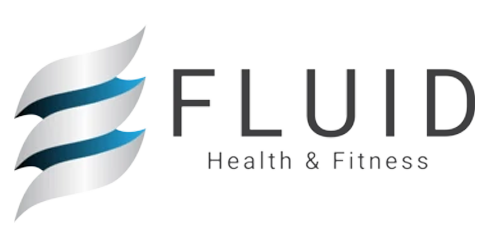The shoulder is a very complex joint, and has the most extensive range of motion of any other joint in the human body. The shoulder is meant to move in all planes and is a joint of mobility (rather than stability). This allows us to reach, perform overhead movements, and perform activities in our daily life with our upper extremities. The shoulder movement terms are: flexion, abduction, extension, external rotation, internal rotation, and circumduction. The shoulder joint is a “ball and socket” joint, and is formed by the head of the humerus (upper arm bone) and the glenoid fossa of the scapula (shoulder blade). Because of the extensive role of the shoulder, when shoulder pain develops it can be extremely debilitating and make a large impact in one’s daily life.
Shoulder pain can be caused by many factors. It can be a result of an acute injury to the shoulder or can develop over time as more of a “wear and tear” with no particular mechanism of injury. Acutely traumatic shoulder injuries and pain should be treated differently than chronic or postural-related shoulder injuries. Some of the most common causes of non-acute shoulder pain are related to shoulder impingement, poor posture, and shoulder tendonitis. There can be pain in the shoulder that is actually radiating from the neck or caused by other regions such as the thoracic spine or scapulothoracic joint aka the “shoulder girdle.” Particular ways in which one can potentially avoid shoulder pain will be discussed in this article as well.
With an acute traumatic shoulder injury, a person will often feel shoulder pain while performing a particular task or activity and can point to a particular event that caused their shoulder pain. Some common injuries to the shoulder are rotator cuff tears, shoulder dislocations or sprains to the shoulder ligaments. These injuries can be related to overhead carrying or reaching with heavy loads, pulling or pushing, a fall onto the shoulder or outstretched arm, or impact injuries in sports. It is important to get the shoulder evaluated as soon as possible after an acute shoulder injury, in order to determine if any damage resulted. Damage could be to the tendon, muscle, joint, capsule or bones. In certain cases, a person may need surgery after a traumatic shoulder injury due to excessive damage. In other cases, the person will need specific rehabilitation for the shoulder in order to return to their prior level of function.
Shoulder “impingement” is usually a “wear and tear” type of injury rather than an acute injury. Shoulder impingement is when a structure such as a tendon, ligament or the bursa gets pinched in the subacromial space of the shoulder. The subacromial space is the name of the region below the acromion. The acromion is the bony prominence of the shoulder blade that extends up and meets with the clavicle to form the acromioclavicular joint. The head of the humerus sits just below the subacromial space, and there are structures that run through the space such as the bursa, supraspinatus and bicep tendon and ligaments between these two structures.
There can be either primary impingement or secondary impingement. Primary impingement is when the person has a larger than normal or differently-shaped acromion, therefore causing the impingement. Secondary impingement is when the impingement is caused by poor posture, weakness or imbalances, or poor movement patterns. In either case, the person should be evaluated specifically to determine their plan of care and specific impairments. This person usually experiences pain with reaching overhead, behind their back, or during certain combined movements. Shoulder impingement should be treated with physical therapy.
Shoulder pain that is related to poor posture is very common, especially with our societal “norm” of working on computers or laptops and phones. Often, when we talk about exercise or proper posture the phrase “set your shoulder blades in place” is used. The term “scapular squeeze” is also widely used to describe this.
What muscles must we engage in order to achieve this proper position or posture? It takes a combination of certain muscle groups to help set the shoulders and shoulder blades into a good position and achieve proper posture. The concept is to set up a solid foundation for the shoulders, trunk, head and neck complex. The group of muscles that need to be engaged and strong in order to achieve the proper posture are: rhomboids, middle and lower trapezius, serratus anterior, and latissimus dorsi. One also needs to stay open through the chest and front of the shoulders, with proper pectoralis flexibility and length. This proper posture helps to keep the head of the humerus sitting in the center of the glenoid fossa aka “sitting in the socket” correctly. This is the most advantageous position for the body in terms of proper alignment and posture, as well as key in setting a strong foundation on which to move from.
Another common cause of shoulder pain or injury is rotator cuff tendinitis. This can be of varying degrees of pain or damage, and means that the rotator cuff tendons are inflamed or injured. At times, when the tendon is repeatedly injured it develops microtears and becomes less healthy and weaker. The rotator cuff muscles are a group of muscles that surround the shoulder joint and help to keep the head of the humerus in the correct position, basically keeping the “ball in the socket.” These muscles also help to move the shoulder in certain planes of motion.
The specific rotator cuff muscles of the shoulder are the infraspinatus, supraspinatus, teres minor and subscapularis. Each muscle connects to the bone by way of their tendon. The supraspinatus abducts the shoulder, meaning brings your arm out to the side. The infraspinatus and teres minor muscles externally rotate the arm, meaning when your elbow is bent then it rotates outwardly from the body. The subscapularis muscle internally rotates the arm, meaning brings it inward toward the body.
With rotator cuff tendinitis, it is important to determine which tendon is involved and what specific exercises are indicated. This can be assessed by determining which movements are painful, as sometimes a person will have pain with lifting the arm in certain planes or with certain activities. Usually this person will have pain while sleeping on that shoulder as well. Some common rotator cuff strengthening exercises are scaption (lifting the arm out at a 45 degree angle from the body) and sidelying external rotation (rotating the arm up toward the ceiling). Tendon issues respond well from strengthening eccentrically, which means the strengthening is occurring when the muscle and tendon are lengthening out.
When someone has shoulder pain due to rotator cuff tendinitis, it is also very important to again strengthen the postural muscles listed above. This can include strengthening exercises such as low-rows, lat pull-downs, prone stabilization exercises like lifting the arms out to the sides like the letter “T” or the letter “Y.”
Other sources of shoulder pain can actually be a result of a different body part than the actual shoulder joint. Some examples of these body parts are the neck, mid back or shoulder blade. Nerve compression in the neck can radiate into the shoulder, shoulder blade or arm. Therefore, the neck needs to be fully evaluated and ruled out as the cause. The mid back aka “thoracic spine” can also be a pain generator and cause dysfunction of the shoulder. If this region is stiff and not moving appropriately or weakness is present then the shoulder can become painful and not function correctly. The shoulder blade on the thoracic cage is termed the “scapulothoracic joint” and this can also cause issues in the shoulder joint. All of these regions must have proper mobility and range of motion at that particular joint or joints, proper alignment and proper stability and strength. Otherwise, the shoulder joint itself may become compromised and painful.
Whether you have had an acute shoulder injury or it has been developing over time, the shoulder should be evaluated properly to determine the plan of action. There are specific treatments to restore the base of support of the shoulder and the postural muscles, as well as to improve the strength and range of motion of the shoulder itself.
Be sure to note if any other regions may be affecting your shoulder, such as your neck or mid back. A good place to start is to watch your posture and focus on keeping proper posture throughout the day.
If you develop shoulder pain, make an appointment to see a physical therapist at Fluid Health & Fitness as soon as possible in order to get evaluated and start a focused plan.
In order to prevent shoulder pain, strengthen your scapular stabilizers (listed above) as well as your rotator cuff muscles. Also be sure to keep your thoracic spine mobile and watch that you are not lifting loads that are too heavy for you or performing repetitive overhead lifting tasks. The sooner you begin a proper training regimen for the health of your shoulders, the better!
To restore your shoulder health with one of our Physical Therapists, call 1-844-358-4343, email us at admin@fluidhealthandfitness.com, or send us a message.


